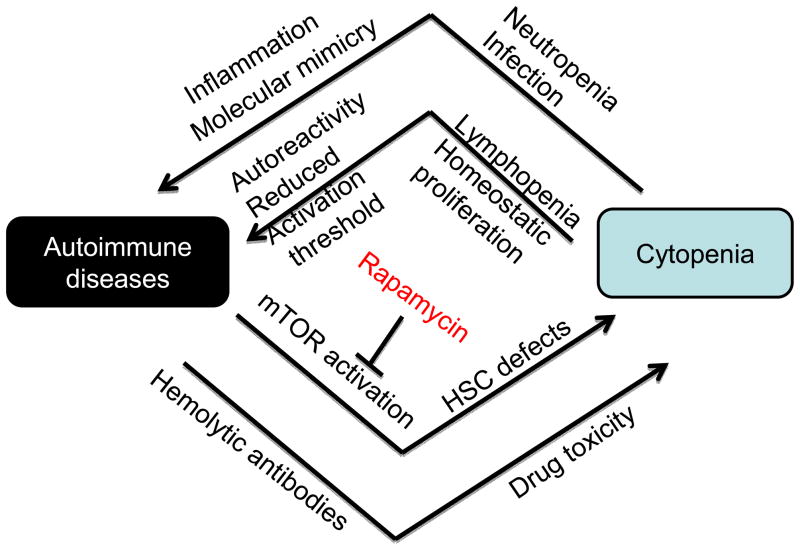Fig. 2.
A vicious cycle between cytopenia and autoimmune diseases. Cytopenia, as observed in autoimmune patients, has been shown to be caused by autoreactive hemolytic antibodies, drug toxicity or HSC defects associated with mTOR-hyperactivation. Cytopenia may exacerbate autoimmune diseases by increased infection and lymphopenia. Infection has been shown to exacerbate autoimmune diseases, both through molecular mimicry and activation of TLR. On the other hand, since lymphopenia-induced HP requires self MHC-peptide complex, homeostatic proliferation may increase the frequency of autoreactive T cells. Furthermore, since HP converts naïve T cells into memory-like T cells with a lower activation threshold, HP will likely facilitate activation of autoreactive T cells. Given the central role of mTOR activation in HSC defects, we propose that rapamycin may be used to break the vicious cycle between cytopenia and autoimmune diseases.

